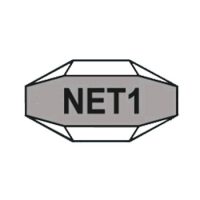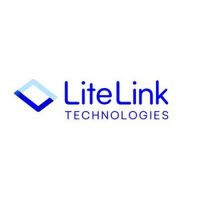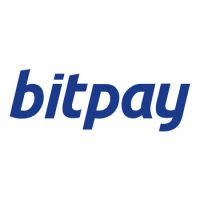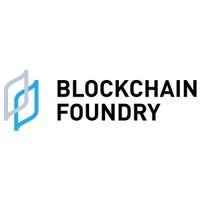Blockchain
SaaS platform FiO finds success at Singapore FinTech Week 2019

Disruptive SaaS business FiO, a blockchain-onboarding platform for conventional businesses, was in full attendance at Singapore’s recent FinTech Week, where its senior team met with new potential partners and investors.
The company successfully met its agenda objectives that included fundraising, brand-building, networking with attendees and patent registration.
FiO CEO George Chu held scheduled meetings with high-profile investors such as True Global Ventures, during which his business development team demonstrated FiO’s unique SaaS platform that targets traditional enterprises looking to integrate blockchain.
Partly developed on IBM Hyperledger technology, the unique platform offers a simple, non-technical SaaS tool to help businesses decentralize their operations and create distributed ledger applications at their own speed without the need to understand blockchain technology.
FiO’s comprehensive revenue model includes affordable tiered and Pay-as-You-Go (PAYG) subscriptions to fit all enterprises. In addition, its customized data premium services target potential markets in accounts receivable (AR) financing, third-party payment procession, intellectual property management, and luxury goods provenance.
Mr. Chu also met up with the company’s legal advisors at Taylor Vinters Via at Gateway to advance FiO’s pending patents.
Elsewhere in Singapore, FiO Chief Technology Officer Kaede Tai met with AWS and permissioned blockchain platform Corda to discuss possible technical partnerships. The FiO team also met face-to-face with several projects not yet deployed on blockchain, explaining FiO’s core benefits to them, with across-the-board positive feedback.
FiO allows its users to connect to many different blockchains, both permissioned and public, through multi-cross chain technology without the need to select only one blockchain. In the future, developers can utilize the company’s platform to create their own blockchain products and share in their revenue.
Sitt Guruvanich, FiO’s Senior Technology & Architecture Director, networked extensively at the blockchain week’s flagship events such as The Capital, meeting with Magespire, Bank of Singapore, R3 Bootcamp and Korean investors.
After the week’s conclusion, CEO Mr. Chu stated:
“We are buoyed by the positive response from new potential investors and partners in Singapore. Based on feedback and current follow-up discussions, we will likely make a few big announcements in early 2020.”
Overall, this augurs well for the company’s ambitious roadmap next year. FiO earned a reported USD 2.7 million in revenue from 12 clients in 9 industries so far in 2019, with pipelines in place for 2020.
Blockchain
Wen Acquisition Corp Announces the Pricing of $261,000,000 Initial Public Offering
Blockchain
Blocks & Headlines: Today in Blockchain – May 15, 2025 (BTC’s Push, Pi Network Fund, Stablecoin Levers, JPM Pilot, OKX × Man City)

Every trading day, Blocks & Headlines decodes the most significant moves in blockchain technology and cryptocurrency, blending market updates, strategic analysis, and thought—so you can stay ahead in Web3’s fast-moving world. Today’s briefing zeroes in on five game-changing developments:
-
BTC’s $58 Million Raise for ETH Purchases – Bitcoin miners diversify treasury strategies.
-
Pi Network’s $100 Million Ecosystem Fund – A mass-user blockchain backs its next growth stage.
-
Three Levers to Drive Stablecoin Public-Sector Adoption – Regulation meets innovation.
-
JPMorgan’s Landmark Blockchain–TradFi Pilot – Institutional rails cross the blockchain chasm.
-
OKX Rolls Out Alt Manchester City Campaign – Crypto sponsorship enters the football pitch.
Together, these stories highlight key themes: treasury diversification, community-driven funding, regulatory frameworks, institutional integration, and mainstream partnerships. Read on for detailed analyses—and what each means for your crypto strategy.
Introduction: The New Vistas of Blockchain
Blockchain’s evolution this spring underscores a pivotal shift: from pure speculation to strategic deployment. Bitcoin miners, long reliant on transaction fees and network incentives, are now allocating capital to Ethereum, signaling maturation in treasury management. Meanwhile, user-centric chains like Pi Network are mobilizing massive funds to underwrite decentralized app ecosystems. Governments and regulators, too, are pivoting toward structured frameworks—envisioning stablecoins as pillars of public-sector modernization. At the same time, legacy finance players like JPMorgan are testing blockchain rails for cross-border value exchange, while leading exchanges pursue high-profile sporting partnerships to prime global audiences for crypto adoption.
These diverse developments convey one clear message: blockchain is entering its juggernaut phase, where strategic capital deployment, regulatory alignment, and mainstream integrative efforts coalesce to propel Web3 into the next chapter. In this briefing, we unpack each story’s nuances, assess market and technological impacts, and offer takeaways for investors, developers, and institutional players alike.
1. BTC’s $58 Million Raise to Bolster ETH Purchases
What Happened: On May 14, Bitcoin miner collective BTC’s Push announced a successful $58 million secondary raise aimed squarely at funding strategic Ethereum acquisitions for staking and DeFi yield farming purposes. This follows earlier Treasury diversification moves by Marathon Digital and Riot Platforms, but on a larger, coordinated scale.
Source: The Block
The Mechanics of the Raise
-
Participants & Structure: The round drew in leading crypto funds—Multicoin, Paradigm, and Pantera—via convertible note instruments, offering 8% interest and a conversion price tied to a 10% discount on ETH’s 30-day volume-weighted average price.
-
Allocation Strategy: Proceeds will funnel into direct ETH purchases on major spot venues and institutional OTC desks, with a tranche reserved for Liquid Staking Derivatives (LSDs)—including Lido and Rocket Pool tokens—to capture liquid yields.
-
Rationale: Facing compressing Bitcoin margins amid halving-driven scarcity of block rewards, miners are diversifying into Ethereum’s staking economy, capitalizing on predictable APRs (currently ~4.5%) and burgeoning DeFi revenue streams.
Market Implications
-
Cross-Chain Treasury Management: BTC miner allocators validating ETH staking signals an era where major protocol economies interweave on the balance sheets of institutional crypto actors.
-
Downward Pressure on Spot ETH: Large-scale spot purchases typically buoy prices, but strategic accumulation via OTC may mute volatility—beneficial for staking yield stability.
-
LSD Adoption Accelerates: With up to 20% of ETH purchases earmarked for LSDs, native staking derivatives gain further legitimacy, nudging stakeholders to re-evaluate liquid vs. locked staking trade-offs.
Opinion & Outlook
This raise epitomizes institutional sophistication in digital-asset portfolio engineering. Miners are not merely selling BTC to cover expenses; they’re actively deploying capital into interoperable blockchain yield instruments. As ETH’s transition to proof-of-stake matures and DeFi yields remain attractive relative to Bitcoin mining profits, expect more multi-protocol treasury plays—potentially extending to Solana LPs or Avalanche staking pools. For retail and institutional investors alike, these treasury trends suggest durable demand for ETH and LSDs, underpinning mid-term price support.
2. Pi Network Launches $100 Million Ecosystem Fund
What Happened: The Pi Network team unveiled a $100 million ecosystem fund dedicated to nurturing dApp developers, infrastructure providers, and NFT artists building within its rapidly scaling mobile-first blockchain.
Source: Cointelegraph
Fund Structure & Goals
-
Capital Allocation:
-
40% to Core Infrastructure: Node incentives, RPC services, indexing tools.
-
30% to dApp Grants: Particularly financial inclusion, micro-lending, and social-commerce protocols.
-
20% to NFT & Creator Programs: Artist residencies, marketplace subsidies.
-
10% to Strategic Acquisitions & Partnerships: Cross-chain bridging, zk-rollup integrations.
-
-
Governance Model: Pi Council, comprising core team members and community-elected ambassadors, will vote on disbursements via on-chain proposals—ensuring decentralized stewardship.
-
Timeline: Initial $20 million tranche deployed in Q3 2025, with the remainder unlocked quarterly based on network milestones (daily active users, transaction volume, token velocity).
Relevance & Potential
-
Mass-User Onboarding: With over 50 million active mobile miners, Pi Network boasts one of the largest captive user bases. Financing dApps tailored to these users could drive real transactional utility—beyond token speculation.
-
Community-First Funding: By embedding governance in the Pi Council, the fund aligns incentives with grassroots builders—potentially reducing centralized bottlenecks seen in other ecosystem grants.
-
Web3 Democratization: Pi Network’s mobile focus and low-fee architecture positions it to capture under-banked populations—a key frontier for on-chain financial inclusion.
Opinion & Outlook
The $100 million fund is a bold statement: Pi Network is shifting from token distribution hype to ecosystem activation. Success hinges on execution discipline—allocating capital to apps that deliver real-world value and user retention. Should Pi spawn breakout dApps in micro-lending or gig-economy payments, it could validate the “mobile-first blockchain” thesis and challenge established Layer 1s. Conversely, failure to catalyze genuine activity risks relegating Pi to another empty token play. Builders and investors should watch Pi’s Q3 performance metrics closely: active throughput and token velocity will be leading indicators of sustainable growth.
3. Blockchain Regulation & the Public Sector: Three Levers to Drive Stablecoins
What Happened: In a detailed analysis for Funds Society, blockchain policy experts identified three critical levers governments can deploy to accelerate stablecoin adoption in public-sector use cases: 1) Regulatory clarity via bespoke stablecoin frameworks, 2) Central bank digital currency (CBDC) interoperability mandates, and 3) Fiscal stimulus pilot programs.
Source: Funds Society
The Three Levers Explained
-
Bespoke Stablecoin Regulation:
-
Crafting targeted laws—distinct from securities or money-transmission statutes—can streamline issuer licensing, reserve requirements, and custody standards.
-
-
CBDC Interoperability Mandates:
-
Mandating APIs that allow stablecoins to seamlessly transact with emerging CBDCs (e.g., the e-Euro) prevents fragmentation and spurs innovation.
-
-
Stimulus & Grant Pilots:
-
Direct funding of social benefits via approved stablecoins (e.g., for disaster relief or tax rebates) bootstrap user familiarity and network liquidity.
-
Broader Implications
-
Public-Private Collaboration: Co-designing frameworks with established issuers (Circle, Paxos) and DeFi protocols (MakerDAO) ensures regulations accommodate on-chain composability.
-
Financial Inclusion: Well-regulated stablecoins can deliver faster, cheaper payouts to under-served communities—particularly across EU-Africa corridors.
-
Monetary Stability: Clear guidelines on reserve management and auditing bolster confidence, reducing redemption risk and contagion from issuer failures.
Opinion & Outlook
Stablecoins are the on-ramp to blockchain-based public finance. Yet, regulatory ambiguity has constrained adoption to niche corporate pilots. By wielding these three levers, policymakers can foster a harmonized, innovation-friendly environment—balancing risk mitigation with pace. For blockchain firms, engaging early in consultations and sandbox programs is vital. And investors should track jurisdictions piloting stablecoin grants—these will likely become blueprints for global standard-setting.
4. JPMorgan Bridges Blockchain and TradFi in Landmark Pilot
What Happened: JPMorgan executed its first public blockchain pilot facilitating an institutional cross-border payment between its New York and London operations, using Quorum-based channels and a tokenized USD settlement layer.
Source: CryptoSlate
Pilot Details
-
Settlement Tokens: JPM Coin (ERC-20), temporarily bridged via a permissioned Ethereum sidechain.
-
Transaction Flow:
-
NY branch issues JPM Coin to London counterparty.
-
Smart contract escrow holds tokens until KYC/AML checks complete.
-
Tokens redeemed and fiat disbursed in local currencies.
-
-
Performance Metrics: Settlement finality in <2 minutes (vs. 3–5 business days for SWIFT), throughput of 1,000 txs/sec, and integrated compliance reporting.
-
Next Steps: Scaling to 10+ global corridors, public-private partnerships with central banks exploring wholesale CBDC pilots.
Significance
-
TradFi Embrace of Permissioned Chains: A tacit acknowledgment that blockchain can enhance—not replace—existing rails, offering efficiency gains while preserving compliance controls.
-
Tokenized Fiat’s Viability: Demonstrates tokenization is not academic—banks can leverage stable, permissioned tokens to slash operational costs and risks.
-
CBDC Synergies: Success of JPM Coin pilots lays groundwork for eventual CBDC–stablecoin interoperability and reduces friction in wholesale liquidity management.
Opinion & Outlook
JPMorgan’s pilot is more than a proof-point; it’s a template for global banks to integrate blockchain pockets within legacy infrastructure, extracting value without wholesale disruption. Traditional financial institutions should monitor results closely—particularly the compliance integration and counterparty risk profiles. Meanwhile, DeFi advocates must acknowledge that permissioned blockchains will coexist with public networks, forming a hybrid financial ecosystem. As central banks advance CBDC initiatives, banks already comfortable with tokenized settlement gain a critical head start.
5. OKX Launches Alt Manchester City Campaign
What Happened: Leading crypto exchange OKX unveiled a multi-year sponsorship campaign with Manchester City FC, launching in-stadium NFT activations, fan token incentives, and Web3 watch parties across global OKX lounges.
Source: PR Newswire
Campaign Highlights
-
Fan Token Airdrops: Exclusive MCFC NFTs drop via OKX app at key Premier League matches.
-
Stadium Engagement: AR experiences—scan stadium QR codes to unlock private token presales and digital memorabilia.
-
Global OKX Lounges: Co-hosted events in Dubai, Singapore, and New York, featuring live match streaming with crypto-themed commentary.
-
Charity Tie-In: A portion of secondary NFT sales funds City in the Community foundation projects.
Market & Cultural Impact
-
Mainstream Awareness: Tapping Premier League’s 1 billion+ fanbase amplifies crypto legitimacy beyond niche circles.
-
Fan Token Renaissance: After token hype waned in 2022, OKX’s integrated approach—blending NFTs and real-world utility—may reignite engagement.
-
Regional Growth: Local activations in Asia and Middle East signal OKX’s strategic focus on fast-growing crypto markets hungry for experiential marketing.
Opinion & Outlook
OKX’s Manchester City partnership exemplifies crypto’s turn toward lifestyle branding, where fan loyalty and digital asset ownership intertwine. Success metrics will extend beyond token trading volumes to user-retention, event attendance, and charitable outcomes. Other exchanges and NFT projects should note the power of hybrid physical–digital activations: real-world events lend tangibility to virtual communities, critical for long-term adoption. As sports franchises increasingly seek blockchain partners, expect a new wave of Web3 stadiums, in which every seat becomes a node in a global fan network.
Conclusion: Five Takeaways for Blockchain Stakeholders
-
Inter-Protocol Treasury Moves: BTC miners backing ETH demonstrates that savvy actors view blockchains as interlinked asset classes—prompting reevaluation of single-chain investment strategies.
-
Community-Governed Ecosystem Funds: Pi Network’s $100 million push underscores the necessity of decentralized governance and milestone-based funding to catalyze genuine on-chain activity.
-
Regulation as Enabler: Structured stablecoin frameworks, CBDC interoperability, and stimulus grants illustrate how public-sector levers can accelerate blockchain’s maturation and real-world use cases.
-
TradFi Co-Optation of Blockchain: JPMorgan’s pilot shows that traditional banks will increasingly embed permissioned tokens and smart-contract rails into core operations—integration, not replacement, is the watchword.
-
Mainstream Partnerships Fuel Adoption: OKX’s Man City campaign spotlights the power of mixing digital assets with live events to onboard mass audiences and give blockchain a cultural foothold.
As blockchain’s infrastructure deepens—from miner balance sheets and institutional rails to fan experiences and public-sector deployments—stakeholders must adopt a multi-vector lens: blending treasury strategy, regulatory engagement, technological integration, and experiential marketing. Tomorrow’s top headlines will hinge on how well projects and institutions navigate this complex ecosystem—so stay tuned, stay diversified, and keep validating your own node of opportunity in Web3’s grand experiment.
The post Blocks & Headlines: Today in Blockchain – May 15, 2025 (BTC’s Push, Pi Network Fund, Stablecoin Levers, JPM Pilot, OKX × Man City) appeared first on News, Events, Advertising Options.
Blockchain
BDM Digital Initiates Promising Dialogue with Stanford Law School in Pursuit of Strategic Partnerships in Silicon Valley
Kezia Miranda at a meeting with Professor Roland Vogl, Executive Director of CodeX, affiliated with Stanford Law School, in California (USA).
-

 Blockchain7 days ago
Blockchain7 days agoBitget Blockchain4Youth sostiene l’innovazione del Web3 e dell’IA all’hackathon “Build with AI” di Google Developer Group
-

 Blockchain Press Releases7 days ago
Blockchain Press Releases7 days agoBybit Surpasses 70 Million Users, Reinforces Commitment to Transparency and Institutional Growth
-

 Blockchain3 days ago
Blockchain3 days agoBlocks & Headlines: Today in Blockchain – May 12, 2025 | Rootstock, Zimbabwe Carbon Registry, Fastex, 21Shares, The Blockchain Group
-

 Blockchain Press Releases3 days ago
Blockchain Press Releases3 days agoBullish partners with the Gibraltar Government and GFSC to pioneer world’s first crypto clearing regulation
-

 Blockchain Press Releases4 days ago
Blockchain Press Releases4 days agoBybit Introduces BOB to P2P: Bolivian Traders Can Now Buy, Sell in Local Currency and Earn Commissions
-

 Latest News7 days ago
Latest News7 days agoCasino Kings Knocks Out Partnership with Boxing Powerhouse BoxNation
-

 Blockchain7 days ago
Blockchain7 days agoIndia’s Fintech Market to Reach $990 Billion by 2032 at 30.2% CAGR – Fintech Firms Eye Untapped Indian Digital Payments Market with Secure, Low-Cost Digital Financial Solutions
-

 Blockchain Press Releases7 days ago
Blockchain Press Releases7 days agoBybit P2P: Three Ways to Win Rewards for Block Traders








































